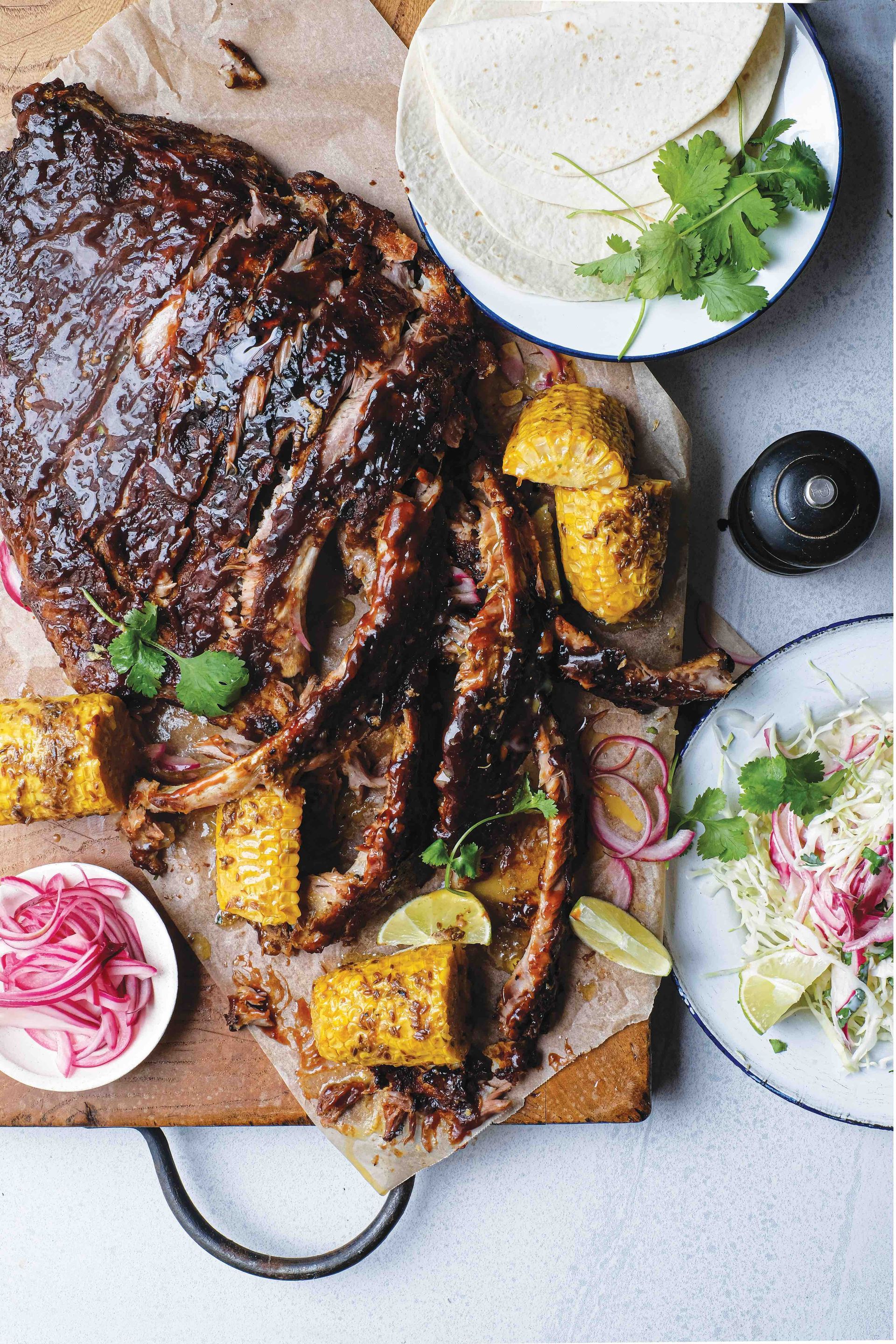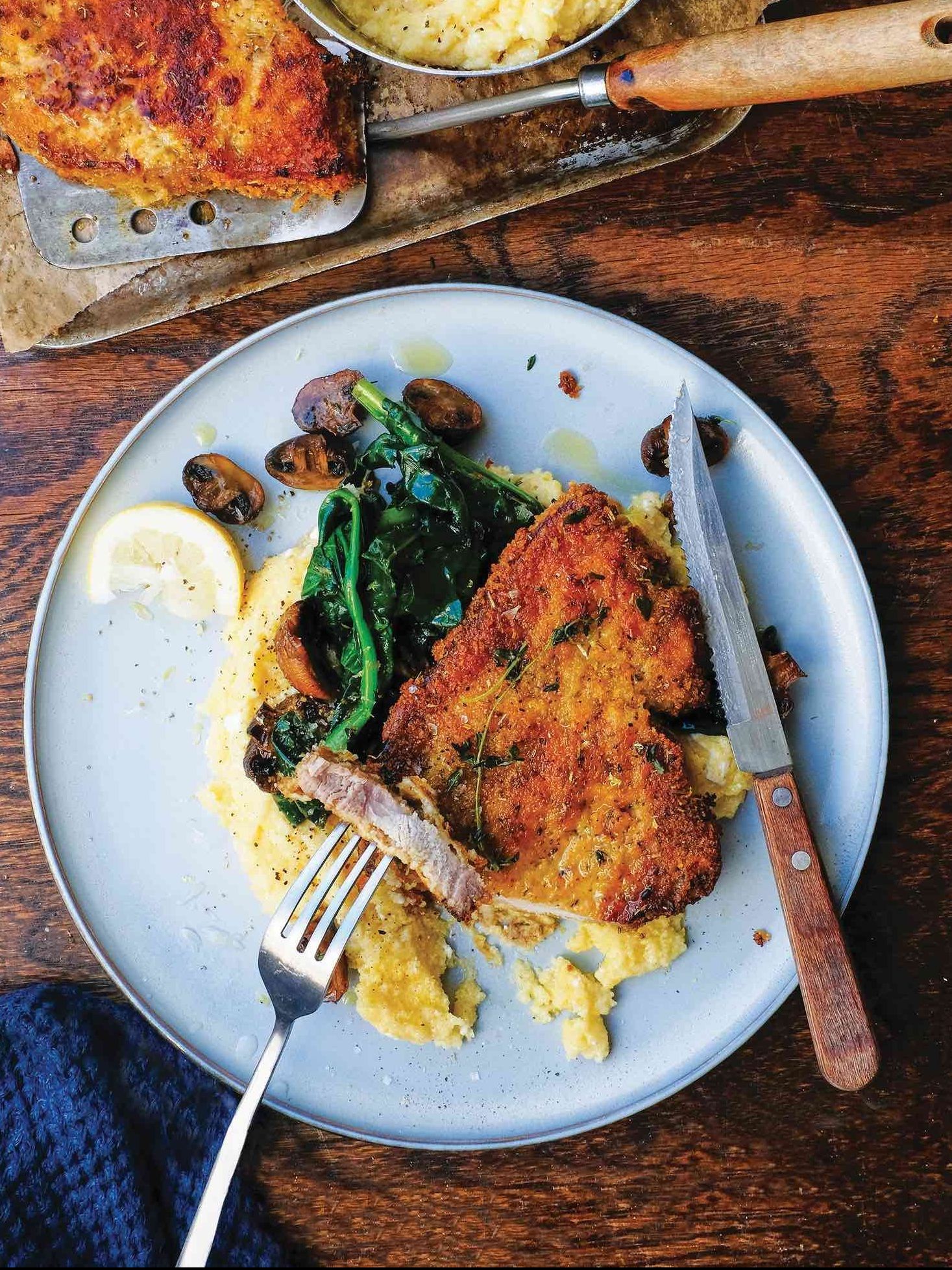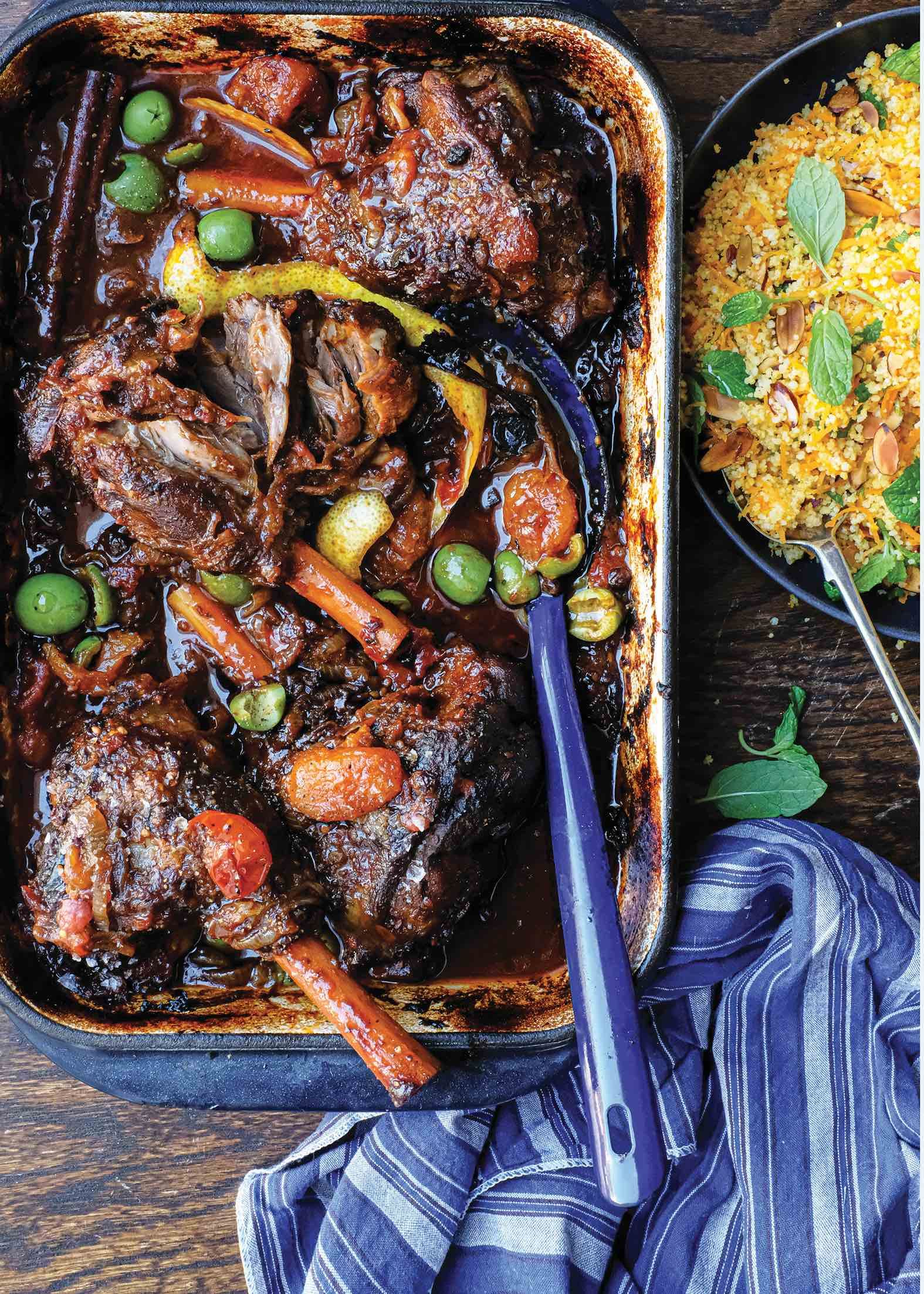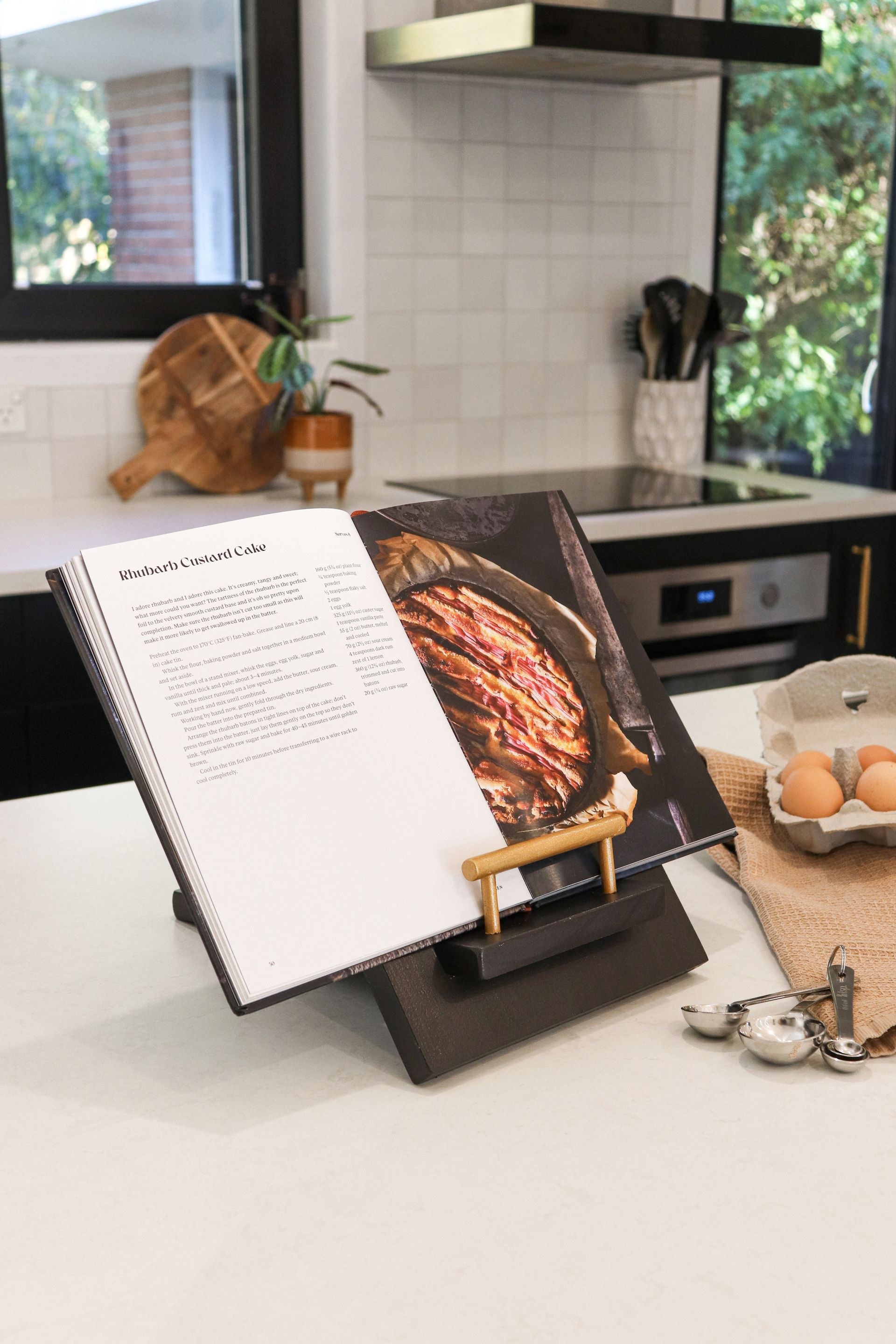Nothing says love more than a delicious hearty dinner, and these mouth-watering dishes from
Peter Timbs Meats are the perfect solution for those seeking ideas for what to cook Mum this Mother’s Day – or for those simply looking for something easy and hearty to enjoy on these cooler autumn nights. You can’t go wrong!
Cumberland Pork Sausages With Buttery Kumara Mash & Onion Gravy
(Pictured Above)
Prep 15 Minutes Cooking 20 Minutes Serves 4
2 tbsp olive oil
8 Peter Timbs Cumberland sausages
1 brown onion, thinly sliced
1 tbsp Worcestershire sauce
1 tbsp wholegrain mustard
1½ tbsp plain flour
¼ cup (60 ml) red wine
1 cup (250 ml) beef stock
1 bunch chives, thinly sliced
boiled peas to serve
Kumara Mash
250 g orange kumara (approx. 1 medium), peeled and cut into
4–5 cm pieces
550 g agria/rocket potatoes (or other floury varieties), peeled and cut into 4–5 cm pieces
1 cup (250 ml) milk
80 g butter
Heat half the oil in a frypan over medium-high heat. Add sausages and cook, turning frequently, for 5–6 minutes or until just cooked through. Set aside on a plate.
Return pan to heat with remaining oil and onion. Add a splash of water then cover and cook, stirring regularly, for 6 minutes or until softened. Remove lid and add Worcestershire sauce and mustard and cook for a further 2–3 minutes or until beginning to caramelise. Add flour and cook, stirring for 1 minute or until beginning to stick to the bottom of the pan. Add wine and bring to the boil. Add stock and return to the boil. Cook for 3–4 minutes or until thickened. Season to taste. Return sausages to pan to warm through.
Meanwhile, for the mash place kumara and potatoes in a saucepan and cover with cold water. Place over high heat and bring to the boil. Cook for a further 15 minutes or until potatoes are cooked through and almost falling apart. Strain and return to pan with milk, butter and season with salt and white pepper. Return to the boil and cook for 2 minutes without touching. Remove from heat and mash until smooth.
Divide mash between plates, add sausages, and pour over onion gravy. Scatter with chives and spoon over peas to serve.
Oven-Baked Chipotle Spare Ribs With Toasted Cumin Butter Corn, Summer Slaw And Tortillas
Prep 15 Minutes Cooking 2½ Hours Serves 4
1.5 kg Peter Timbs pork spare ribs
2 tsp each garlic powder, onion powder, smoked paprika, table salt
½ tsp ground chipotle, cumin powder and black pepper
2 tbsp olive oil
½ red onion, thinly sliced
2 tbsp apple cider vinegar
¼ white cabbage, thinly sliced
handful coriander leaves
2 tbsp mayonnaise
⅓ cup (80 ml) smoky barbecue sauce
tortillas and lime wedges to serve
Cumin Butter Corn Cobs
6 frozen corn cobs
100 g butter
1 tbsp cumin seeds
½ tsp dried oregano and ground coriander
juice of ½ a lime
Preheat oven to 180°C, fan forced. Grease and line 2 baking trays with baking paper.
Combine all spices and scatter over ribs. Rub into meat to coat completely. Add to tray and cover tightly with 2 pieces of foil and bake for 2½ hours or until tender and meat easily pulls away from the bone when pulled with a fork.
Meanwhile, toss onion with a pinch of salt and sugar in a bowl. Add vinegar and set aside to ‘quickle’.
For the corn, place cobs on remaining tray and cover with foil. Add to oven in the final 30 minutes of spare ribs’ cooking time. To make the butter, place cumin seeds in a saucepan over medium-high heat and cook, tossing, until toasted and aromatic. Add oregano, coriander and butter and cook until melted and combined. Add lime juice and set aside.
To finish the slaw, add cabbage, coriander and mayonnaise to quickled onions and toss loosely to combine.

When ribs are cooked, remove foil, and preheat oven grill to high. Spoon over barbecue sauce and use the back of spoon to mix into spice mix on meat. Grill for 5–10 minutes or until sticky and charred slightly.
Spoon cumin butter over corn and serve with ribs, slaw, tortillas and lime wedges.
Parmesan Pork Chops With Quick Polenta & Garlic Butter Veggies
Prep 5 Minutes Cooking 25 Minutes Serves 4

¼ cup (60 ml) olive oil
4 x Parmesan-crumbed Peter Timbs pork chops
300 g button mushrooms, halved (bigger ones quartered)
3 garlic cloves, finely chopped
a few sprigs of thyme
50 g butter
1 large bunch of spinach, stems removed, washed
juice of 1 lemon, plus extra wedges
to serve
Quick Polenta
2 cups (500 ml) chicken stock
2 cups (500 ml) milk
1 cup instant polenta
100 g feta cheese
finely grated zest 1 lemon
Preheat oven to 190°C fan forced.
Line a baking tray with baking paper and drizzle with 2 tablespoons of the olive oil. Add pork chops and turn to coat. Bake for 10 minutes. Remove tray, turn chops, and add mushrooms. Return to oven for a further 10–12 minutes or until pork is just cooked through and mushrooms are turning slightly golden. Pork is fine to be light pink inside.
Meanwhile, to make the polenta, place stock and milk in a saucepan over high heat and bring to the boil. Reduce heat to low, then while whisking, slowly add polenta. Stir for 1 minute until smooth and beginning to thicken, then turn off heat. Add feta and zest and season to taste. Set aside in a warm place.
For the garlic butter veggies, heat remaining oil in a frypan over high heat. Add garlic and thyme and cook for 2–3 minutes or until turning golden and aromatic. Add butter, par-roasted mushrooms and spinach (spinach will seem too big for pan but will wilt fast) and cook, turning for 2 minutes or until spinach is just wilted. Remove from heat, stir through lemon juice and season with salt and pepper.
Divide polenta between plates and top with vegetables and pork chops. Serve with extra lemon wedge.
Moroccan Lamb Shanks With Carrot & Mint Couscous
Prep 15 Minutes Cooking 3 Hours Serves 4–6
⅓ cup (80 ml) olive oil
4 Peter Timbs lamb shanks
2 brown onions, sliced
1 cinnamon quill
4 garlic cloves, thinly sliced
¼ cup harissa paste (we used a
mild variety)
peeled zest and juice of 1 lemon
2 cups (500 ml) chicken stock
400 g can tomatoes (we used cherry tomatoes but anything works here)
½ cup (120 g) dried fruit (we used a combo of currants, apricots and cranberries)
½ cup (75 g) pitted green olives
Carrot & Mint Couscous
1 carrot, grated
1 cup dried couscous
2 tsp olive oil
1 handful mint leaves, roughly torn
¼ cup flaked almonds, toasted
Preheat oven to 150°C fan forced.
Heat half the oil in a large heavy-based flameproof casserole or
roasting pan (*alternatively see slow cooker method) over medium-high heat. Add lamb shanks and cook, turning frequently, for 5 minutes or until browned all over. Transfer to a plate.
Wipe and return pan to heat along with remaining oil, onion and cinnamon. Cook for 6–8 minutes or until softened. Add garlic, harissa and lemon zest and cook, stirring, for 2–3 minutes or until aromatic and beginning to stick to the bottom of the pan. Add

stock, tomatoes and dried fruit and bring to a simmer. Return lamb, cover with foil or a lid and transfer to the oven to cook for 3 hours or until the meat is falling off the bone.
Meanwhile for the couscous, place carrot, couscous and oil in a saucepan or heatproof bowl. Stir to coat.
Then add 1½ cups just-boiled water. Cover and steam for 10 minutes.
Then fluff with a fork and season with salt and pepper. Stir through mint and almonds.
Once lamb is cooked, stir through lemon juice and season to taste.
Scatter with olives and serve with couscous alongside.
*Slow cooker: Transfer lamb and sauce to slow cooker and cook on low for 8 hours or high for 4 hours. Simmer sauce over high heat for a further 15 minutes to reduce sauce slightly.
For more recipes and food ideas from Peter Timbs Meats visit petertimbsmeats.co.nz
Recent stories




